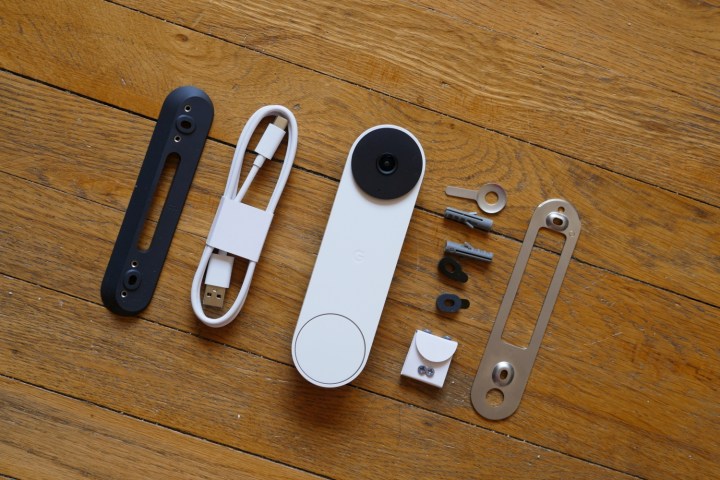
Take a stroll through any neighborhood, and you’re bound to encounter more than a few video doorbells. These nifty devices have grown in popularity over the years, with companies like Ring, Google, Arlo, and Wyze offering their own take on the hardware. But of all the products available today, few are as well-regarded as the Google Nest Doorbell and Ring Video Doorbell (2nd Gen).
These two devices are easy to install, capture high-quality footage, and bring an added layer of security to your front door. But which of the two is the better purchase — the Nest Doorbell or the Ring Video Doorbell? Here’s a look at both video doorbells to help you decide.
Design

The Ring Video Doorbell (2nd Gen) and Google Nest Doorbell couldn’t look more different. One key difference is that the Google Nest Doorbell is available in four colors (snow, linen, ivy, ash), while the Ring Video Doorbell (2nd Gen) is only available in two (nickel or bronze). The Google device also opts for an elongated, almost pill-shaped silhouette, while the Ring Video Doorbell is rectangular.
Both products house their cameras at the top of the device, with the doorbell button located at the bottom. Neither is a bad-looking product, but the Nest Doorbell certainly offers a slimmer profile — and the ability to choose among four colors makes it easy to find something that fits your home.
Winner: Google Nest Doorbell
Installation

Google offers the Nest Doorbell as both a wired and battery-powered video doorbell. Wired connections are great for customers who don’t mind a bit of a DIY project, as they provide the video doorbell with a constant power source. That means you won’t have to pay attention to its battery level or tackle frequent battery swaps. Alternatively, battery-powered units are easier to install, as you don’t have to worry about pesky wiring.
Regardless of which version you pick, Google lets you add professional installation to your purchase for an extra $135. It’s pricey, but it’s a good option for folks worried about their DIY skills.
The Ring Video Doorbell (2nd Gen) can also be used as a wired or battery-powered product. You can even purchase a No-Drill Mount for an additional $18, making it a bit easier to get the device connected to your home.
Winner: Tie
Features and specs

The Google Nest Doorbell films in a 960-by-1280 resolution, supports HDR for crisp images in all lighting conditions, and films in black and white at night. You’ll also get a generous 145-degree viewing angle to better capture people (and packages) at your front door. Toss in a mobile app that offers video history, two-way audio, and a variety of ways to customize its performance, and you’ve got a well-rounded video doorbell.
The Ring Video Doorbell (2nd Gen) offers similar specs. This includes a brilliant 1080p resolution, black-and-white night vision, a 160-degree viewing angle, two-way audio, and heaps of customization options via the mobile app.
Winner: Tie
Price and subscriptions

The Google Nest Doorbell costs $180 and is often on sale for $150. The Ring Video Doorbell (2nd Gen) is $100. Both products lock several key features behind a monthly subscription. For Ring, you’ll want Ring Protect Basic, which costs $5 per month for a single video doorbell and unlocks features like 180-day video history, person and package alerts, digital event history, and more. For the Nest Doorbell, you’ll want Nest Aware, which starts at $8 per month and unlocks 30-day video history, smart alerts, and more.
Note that Google does offer three hours of video history without any subscription, though that’s likely not enough for most shoppers.
Winner: Ring Video Doorbell
Verdict
Truth be told, these two video doorbells are evenly matched. They both capture high-quality footage, feature robust mobile apps, and serve perfectly well as a second layer of security for your front door. But because of its lower price and more affordable subscription plan, most shoppers will find the Ring Video Doorbell (2nd Gen) to be the wiser choice.
However, anyone concerned about hardwiring the device to their home will find the Google Nest Doorbell to be the ideal alternative, as you can add professional installation directly from the store page. But if you don’t mind a small DIY project, the Ring Video Doorbell (2nd Gen) could save you bundles of cash over the years.



